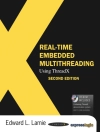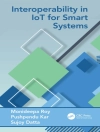Smart energy management, both at design time and at run time, is indispensable in modern radios. It requires a careful trade-off between the system’s performance, and its power consumption. Moreover, the design has to be dynamically reconfigurable to optimally balance these parameters at run time, depending on the current operating conditions.
Energy Scalable Radio Design describes and applies an energy-driven design strategy to the design of an energy-efficient, highly scalable, pulsed UWB receiver, suitable for low data rate communication and sub-cm ranging. This book meticulously covers the different design steps and the adopted optimizations: System level air interface selection, architectural/algorithmic design space exploration, algorithmic refinement (acquisition, synchronization and ranging algorithms) and circuit level (RTL) implementation based on the FLEXmodule-concept. Measurement results demonstrate the effectiveness and necessity of the energy-driven design strategy.
Mục lục
and Motivation.- Adaptation of Classical Design Flow for Energy-Driven System-to-Circuit Design.- System Level Specifications and Design.- Algorithmic/Architectural Design Space Exploration.- Algorithmic/Architectural Level Refinement.- Digital RT Level Design: Flexibility to Save Energy.- Chip and System Measurements.- Conclusions.












